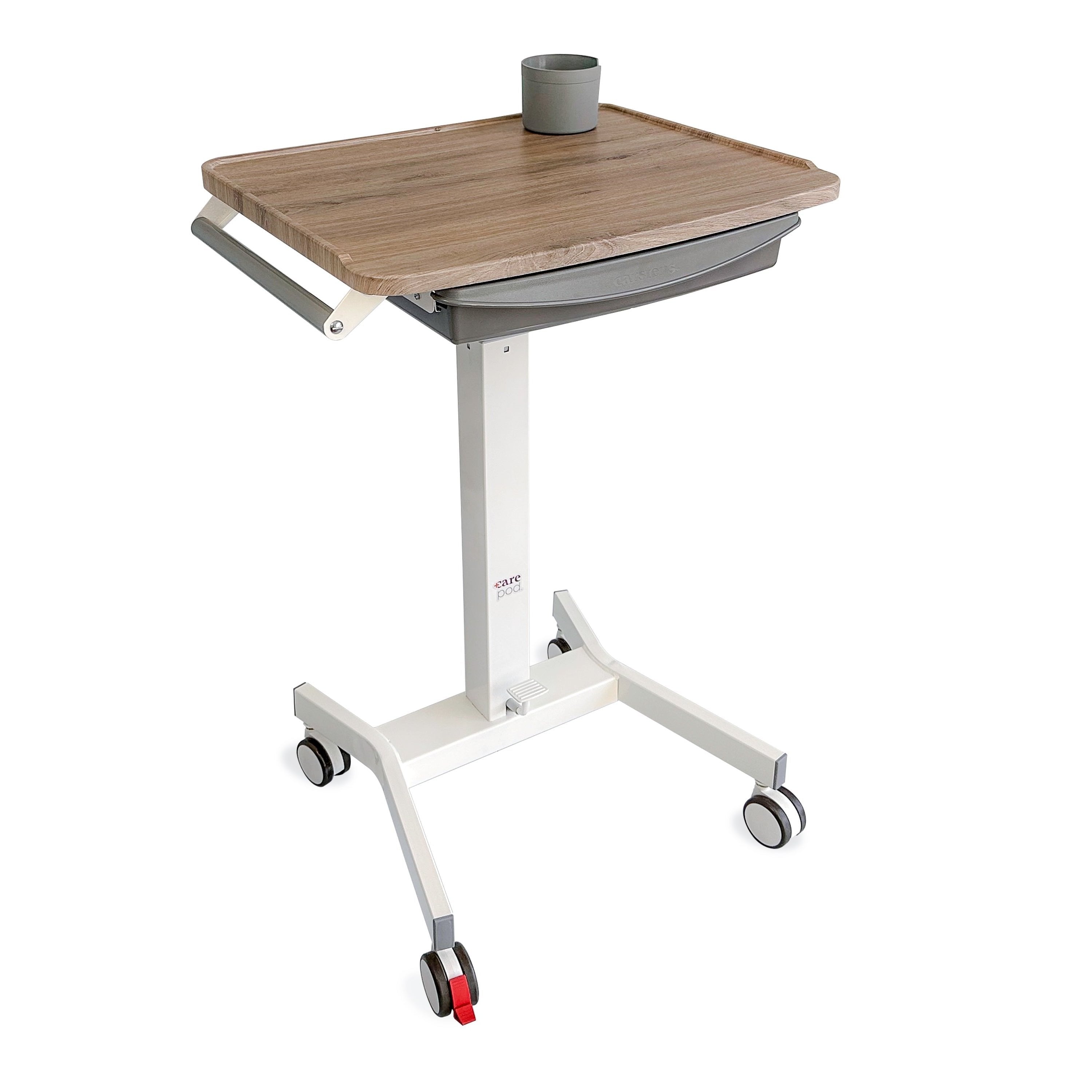In any medical setting, the staff makes it their main priority to ensure patients are comfortable and receive the best care. However, the well-being and comfort of the medical staff is just as important. Improving the ergonomics within your medical facility is necessary to reduce the risks of injury, boost patient care, and increase work satisfaction.
Analyze your workplace and implement tools that can help decrease the risk of safety hazards and create a more efficient work environment. As you work to accomplish this, it’s important to communicate with your staff, compile feedback, and show changes in routine, equipment, and safety procedures.
Optimize your working environment and improve the work culture within the medical facility by creating an ergonomic environment for healthcare workers.
What Does Ergonomics in the Workplace Look Like?
What does it mean for your medical facility to implement ergonomics? Ergonomics enhances your staff’s safety, comfort, and productivity in a workplace setting. You can do this by reducing physical stress and strain on the body and creating a more desirable work setting. Designing and rearranging workspaces, upgrading tools and equipment, and valuing your employee’s feedback can help improve job satisfaction and productivity.
The Importance of Ergonomics in Healthcare Facilities
Medical professionals help make caregiving facilities function to their full potential, allowing patients to get treatment. Realizing the value and importance of implementing ergonomics in your facility will help optimize routines and create a more positive work culture. Healthcare professionals work hard to provide care to patients, and they must possess the appropriate tools and resources to reduce the risk of injury and hazards.
Improves Patient Care
The goal of any medical office is to provide the very best patient care. Implementing ergonomic equipment is another way to contribute to a high-quality facility. With these improvements and devices, your team can help increase patient satisfaction and care.
Most caregiving environments have larger mobile equipment in patient rooms. Staff members can move these pieces safely and quickly around the facility if needed. When choosing mobile equipment, consider selecting items that don’t require much force to push or pull, have adjustable height options, reduce shock and impact loading, and are relatively quiet.
Reduces Medical Staff Injury Risks
Healthcare employees put their all into ensuring their patients receive the best care. While caring for their patients, employees are prone to injury and physical stress. You can minimize this issue by creating an ergonomic environment for healthcare workers.
Medical professionals have many tasks that may result in awkward positioning. Frequently being in these positions can create back issues, muscle fatigue, or joint soreness. Providing your employees with high-quality tools and equipment will help make their operations more efficient and comfortable. Simple changes include mounting medical wall cabinets to reduce repetitive motion strains. Placing these cabinets at the point of care will also help lessen fatigue and decrease the amount of walking the caregiver must do around the facility.
Lessens Risk of Error
Small errors can develop large consequences. Nurses and providers must enter accurate data into electronic medical records (EMRs). Creating an ergonomic environment can reduce the risk of medical errors. When a medical professional can complete their job comfortably, it increases their productivity and allows them to focus on their work.
Finding methods to reduce fatigue and stress can help improve performance among your staff. Implement ergonomically designed workstations that are mobile and equipped with high-quality data entry technology. Providers and staff can adjust their workstations to a height and angle that’s comfortable for them. Without the distraction of being tired or sore, they can focus on their duties without risking error.
Boosts Work Culture Environment
Working long hours can become taxing on your body. As a medical professional, you understand how demanding your job can be and the high stress and fatigue you can experience. Burnout is very common among nurses and support staff. The administration should create a healthy and comfortable work environment for their team to combat nurse burnout.
Providing them with the tools and equipment they need for a successful shift can reduce stress and burnout. Creating a better working environment for your team will help boost the overall work culture, allowing staff members to get along better. An improved environment can result in higher performance and less turnaround.
How To Create a More Comfortable Work Environment
Employees are more likely to perform at a higher caliber when they feel supported and comfortable within their workspace. Read on to discover a few ways to include ergonomics in your healthcare environment.
Identify Possible Risk Factors
Before implementing changes in your work environment, you and your team should identify potential risk and hazard factors. Anything that requires heavy lifting, carrying, pushing, pulling, or frequently awkward positions is worth assessing. This way, you can include tools and equipment to help simplify these tasks and minimize workplace injuries and discomfort.
Implement Positive Changes
Creating an improvement plan to address these risks, errors, and discomfort will help you implement these changes more smoothly. Modifying workstations, equipment, and tools to help reduce stress and other issues will help promote a more safe and comfortable working environment. A thought-out plan that includes staff suggestions and feedback will enhance overall job satisfaction and reduce fatigue.
Train Your Staff and Managers
Training your employees on proper safety techniques, identifying hazards, and using equipment as intended can help improve the work environment and reduce preventable injuries. This way, staff members can pass their knowledge to other employees and make informed decisions. It’s important to stress that their health and well-being matter and that obtaining good ergonomic habits will help improve their working experience.
How Can Carstens Help?
Work injuries and burnout are very common in the healthcare field. It’s important to implement high-quality tools and equipment to ensure that your medical office is up to par. This way, your staff can perform their daily tasks without straining their bodies or experiencing discomfort from repetitive motions. Browse our website for high-quality medical office supplies and tools so that you can create a more efficient working environment.







